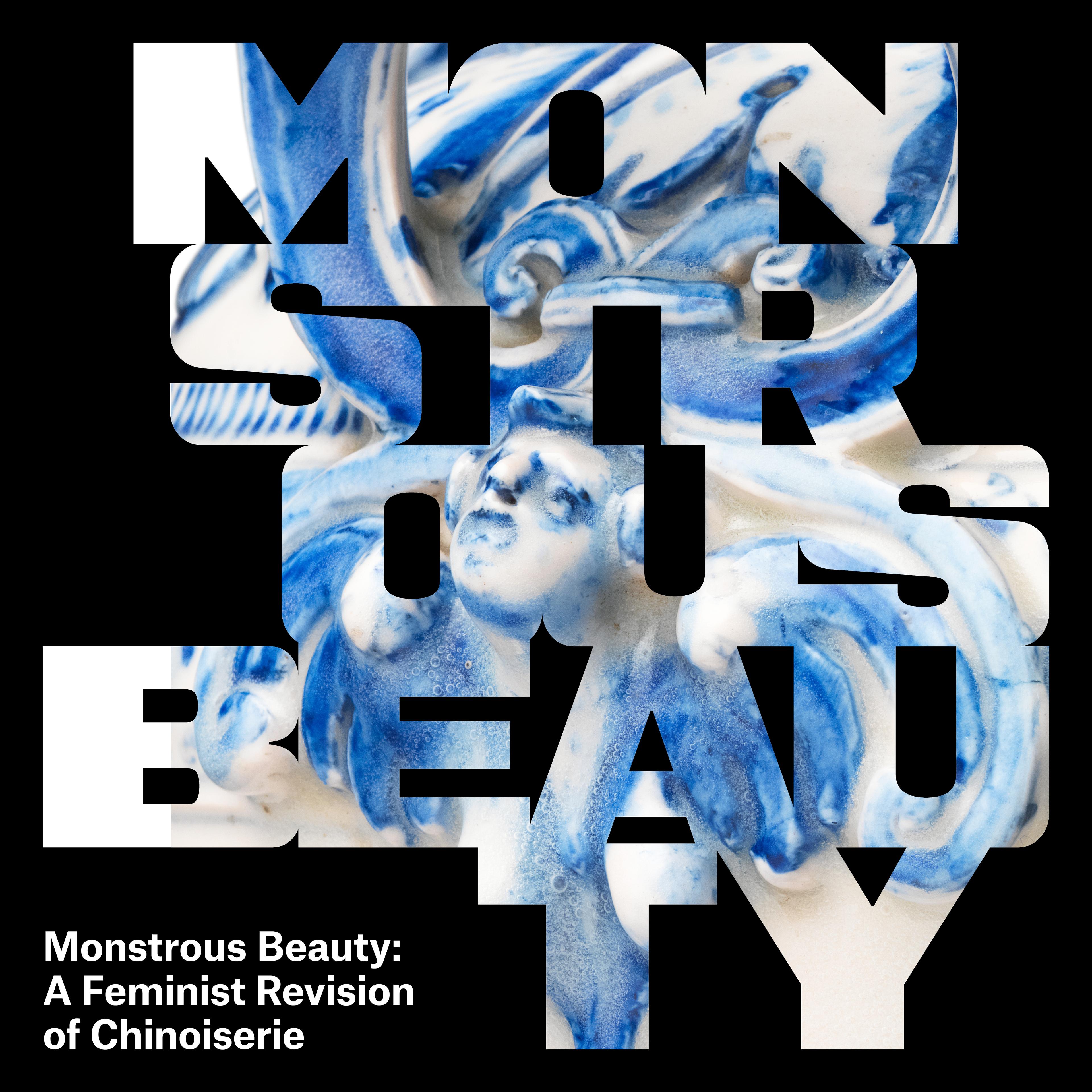The Feminist revision of Chinoiserie
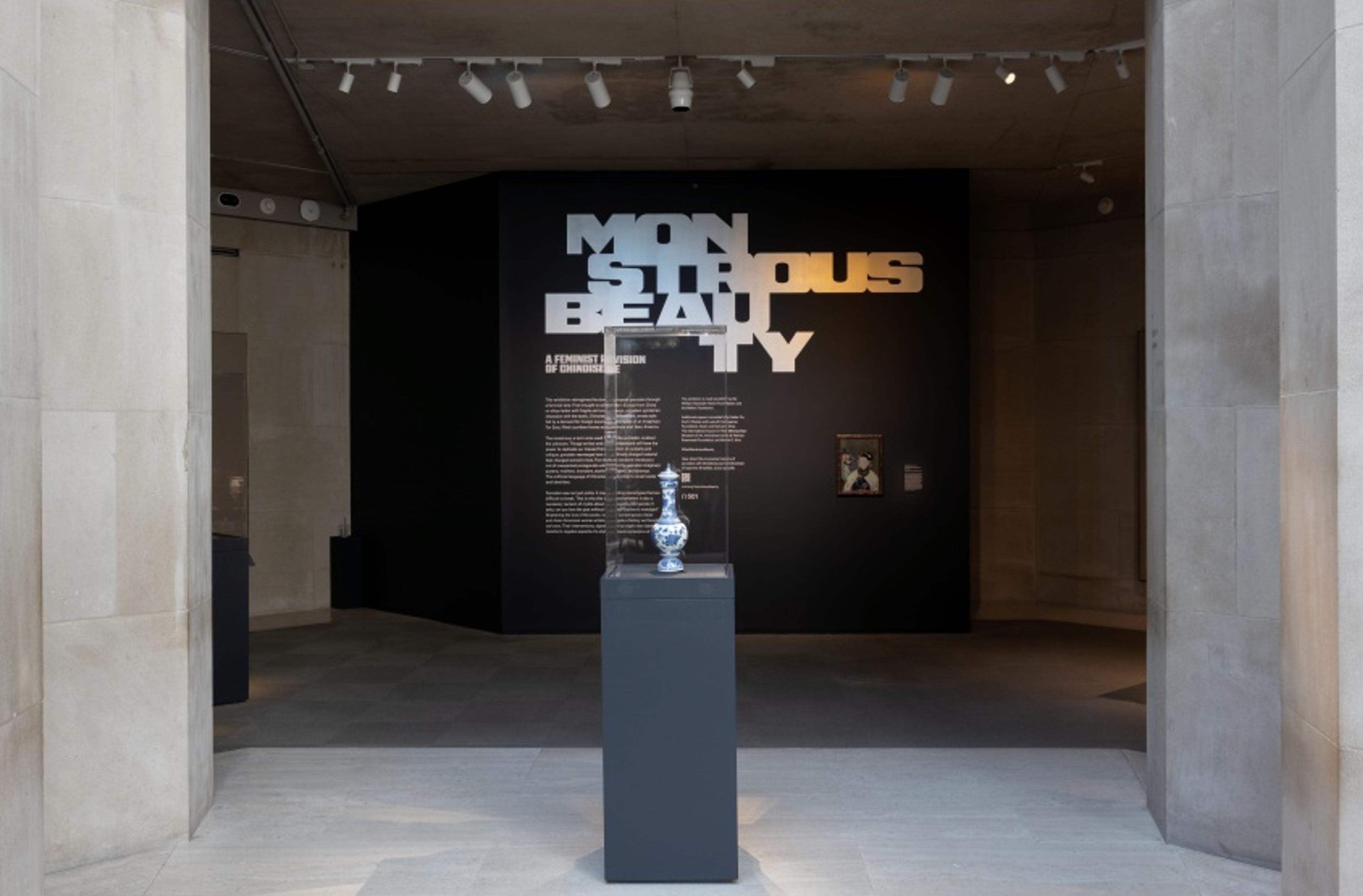
This exhibition reimagines the story of European porcelain through a feminist lens. First brought to early modern Europe from China on ships laden with fragile and coveted cargo, porcelain ignited an obsession with the exotic. Chinoiserie, the effeminate, ornate style fed by a demand for foreign luxuries and fantasies of an imaginary Far East, filled countless homes across Europe and, later, America.
The monstrous, a term once used to describe porcelain, is about the unknown. Things we fear and do not understand still have the power to captivate us. Viewed from a position of curiosity and critique, porcelain reemerges here as a politically charged material that changed women’s lives. Five thematic sections introduce a mix of unexpected protagonists who shaped the porcelain imaginary: queens, mothers, monsters, starlets, shoppers, and cyborgs. The artificial language of Chinoiserie gave voice to novel tastes and identities.
Porcelain was not just polite. It created lasting stereotypes that are difficult to break. That is why this tale of enchantment is also a necessary revision of myths about race, sexuality, and gender. It asks, can you love the past without being held captive to nostalgia? Shattering the lure of the exotic, works by contemporary Asian and Asian American women artists interrogate a history we thought we knew. Their interventions, signaled here by bright neon labels, transform negative aspects of a style into visual expressions of power.
Selected Artworks
Press the down key to skip to the last item.
Shipwrecks and Sirens: Early Arrivals of Porcelain in Europe
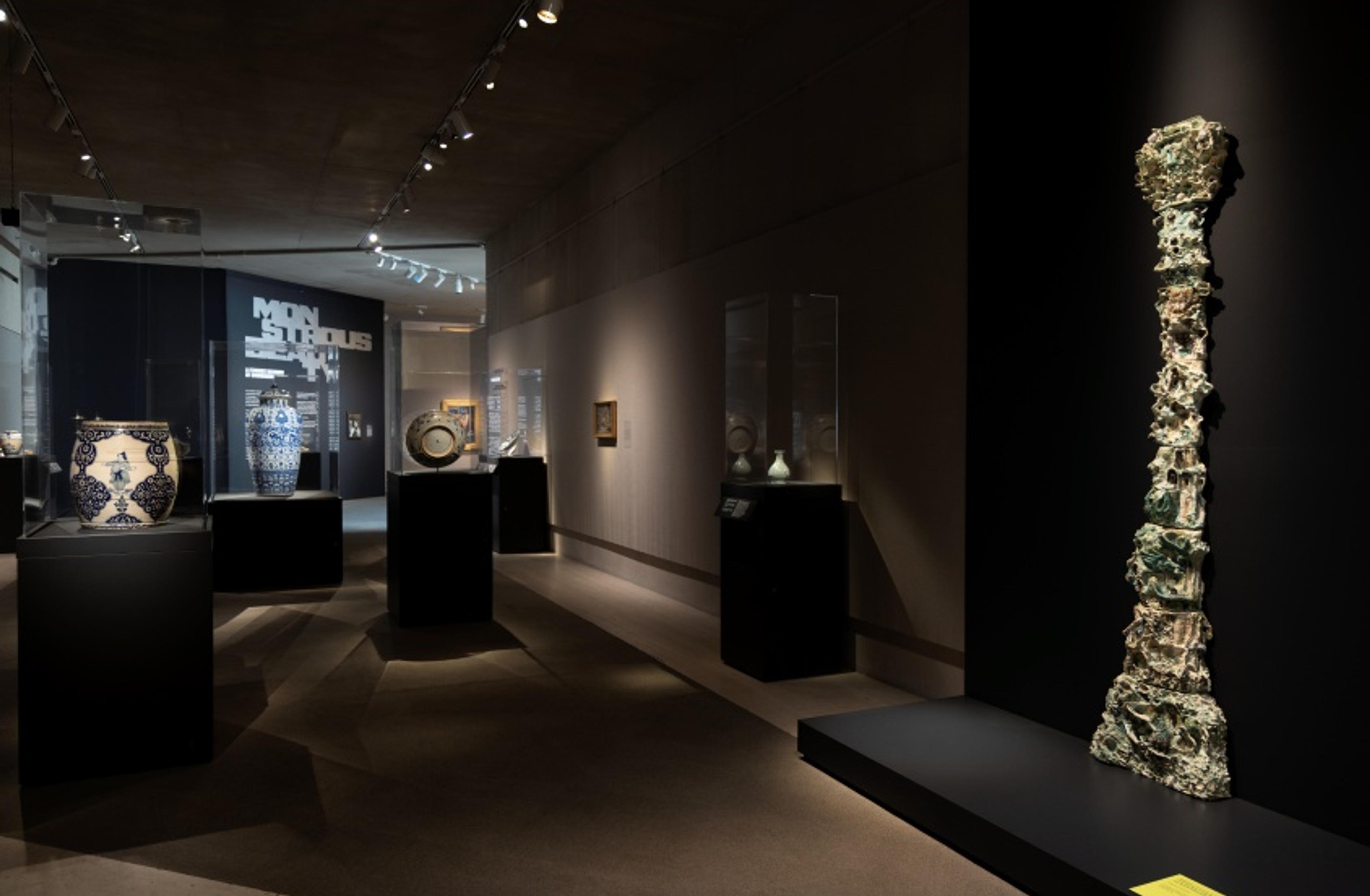

Europeans saw porcelain as strange and marvelous when blue-and-white plates from Asia began arriving by sea in the sixteenth century. Merchants used porcelain from China as ballast, to lend their ships stability in rough seas, before realizing they could profit by selling it to eager buyers. Princes initially displayed vessels as precious treasures in gilded mounts. By the late 1600s, shiploads of porcelain were being auctioned off by fierce trading rivals in Portugal, England, and Holland.
The anxious unease around shipwrecks, warfare, and colonial violence surfaced obliquely in decorative motifs. Sirens, beautiful but deadly, appeared on painted cups and sculpted ornament. Like the mythical sea creature, porcelain was a mystery. Writers pondered the source of the wondrous material. Some linked it to “dung rotten for a long time;” others proposed crushed cowrie shells. Desired as a precious rarity, porcelain was also shaped by the language of denigration. The term derives from the Venetian slang word porcellana (little pig), used to refer to cowrie shells because the slitted form resembled a pig’s vulva. European traders harvested the same shells to buy and enslave African people.
Selected Artworks
Press the down key to skip to the last item.
Surrogate Bodies: Mary II and Porcelain Obsessions
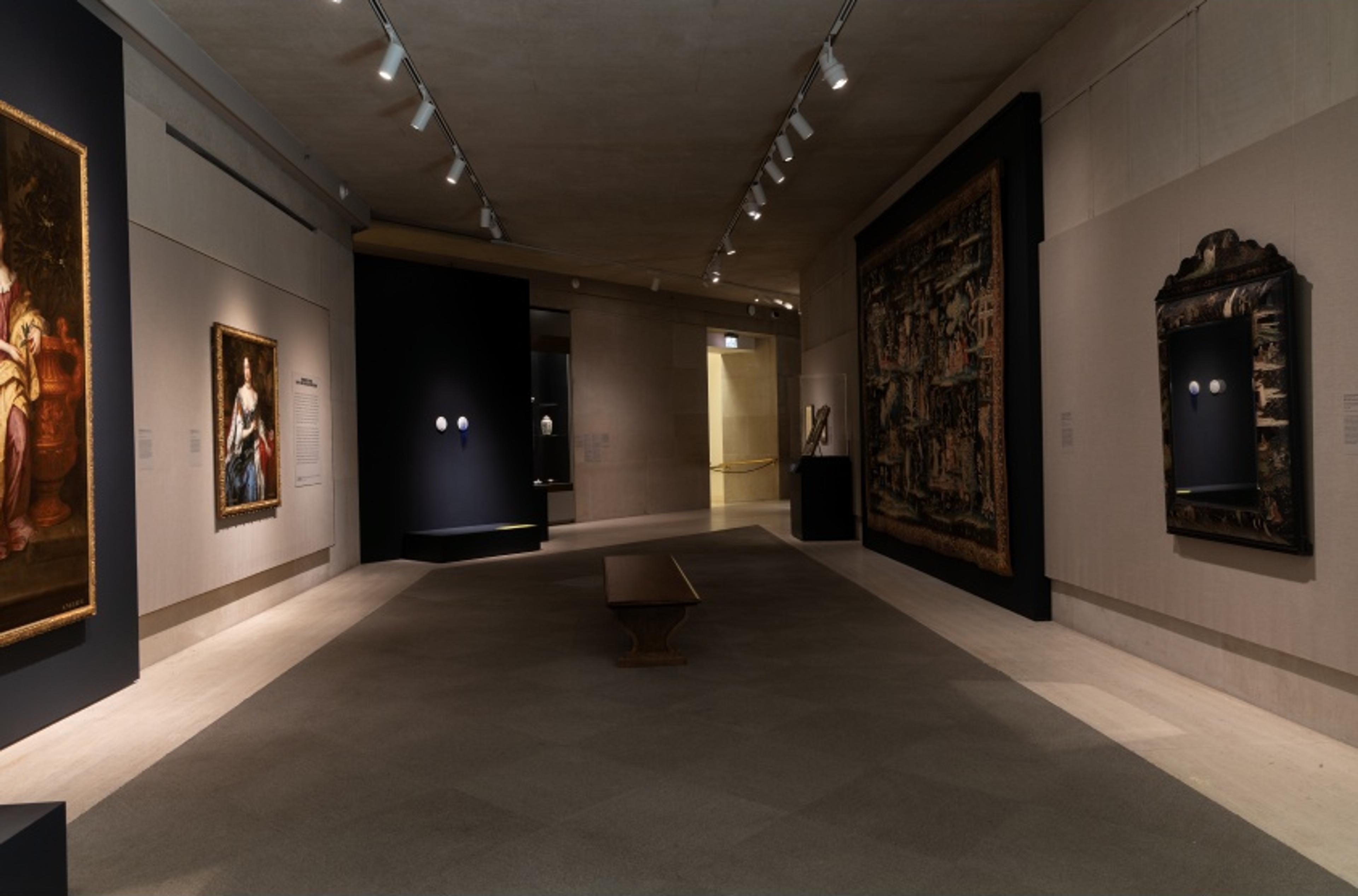
What does it mean to birth a style? In the late 1600s Mary II, queen of England, developed an obsession with Chinoiserie that influenced generations of women collectors in Europe. Mary grew up in Stuart England, when religion divided families and marriages were strategic. As a teenager she was forced to wed her Dutch cousin William, Prince of Orange, and move to Holland, where she discovered a taste for foreign luxuries. After her Protestant husband ousted her Catholic father as king of England, Mary returned—with her ceramics collection.
A queen’s body was not her own. Though William and Mary shared the throne as co-rulers, her main role was to produce an heir. Mary did not bear children. Instead, she birthed the taste for Chinoiserie. Porcelain functioned as a surrogate body, a way to reproduce her presence throughout residences filled with bright ceramics, textiles, and lacquer panels. This feminized, personal take on Chinoiserie contrasted with the French monarchy’s uses of the exotic to assert absolutist power. After her death, a famous writer lamented that Mary had inspired a “fatal excess” among women, whose voracious spending on porcelain would lead to financial ruin. Few heeded him.
Selected Artworks
Press the down key to skip to the last item.
Spilling Tea: Performing Domesticity
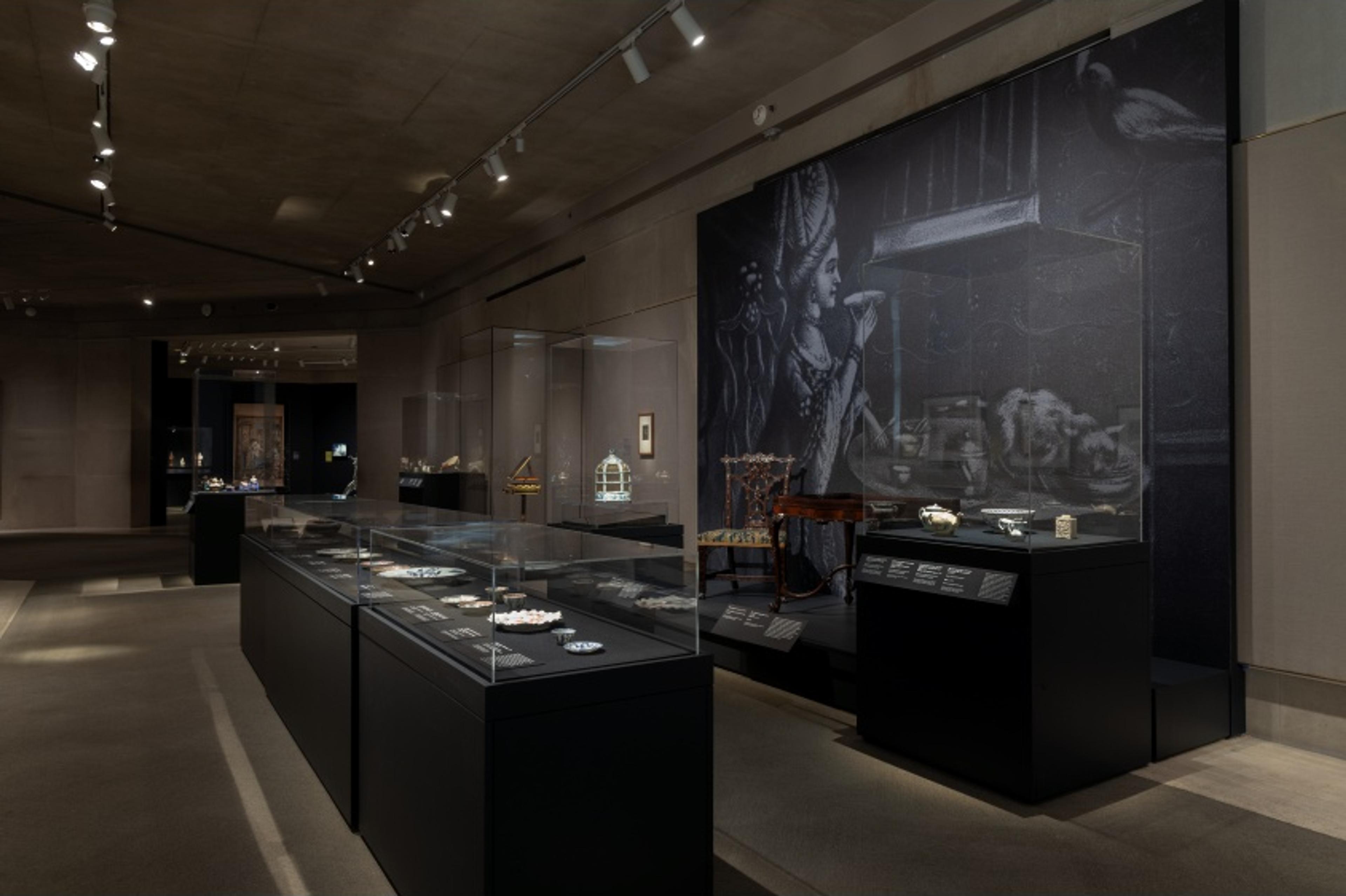
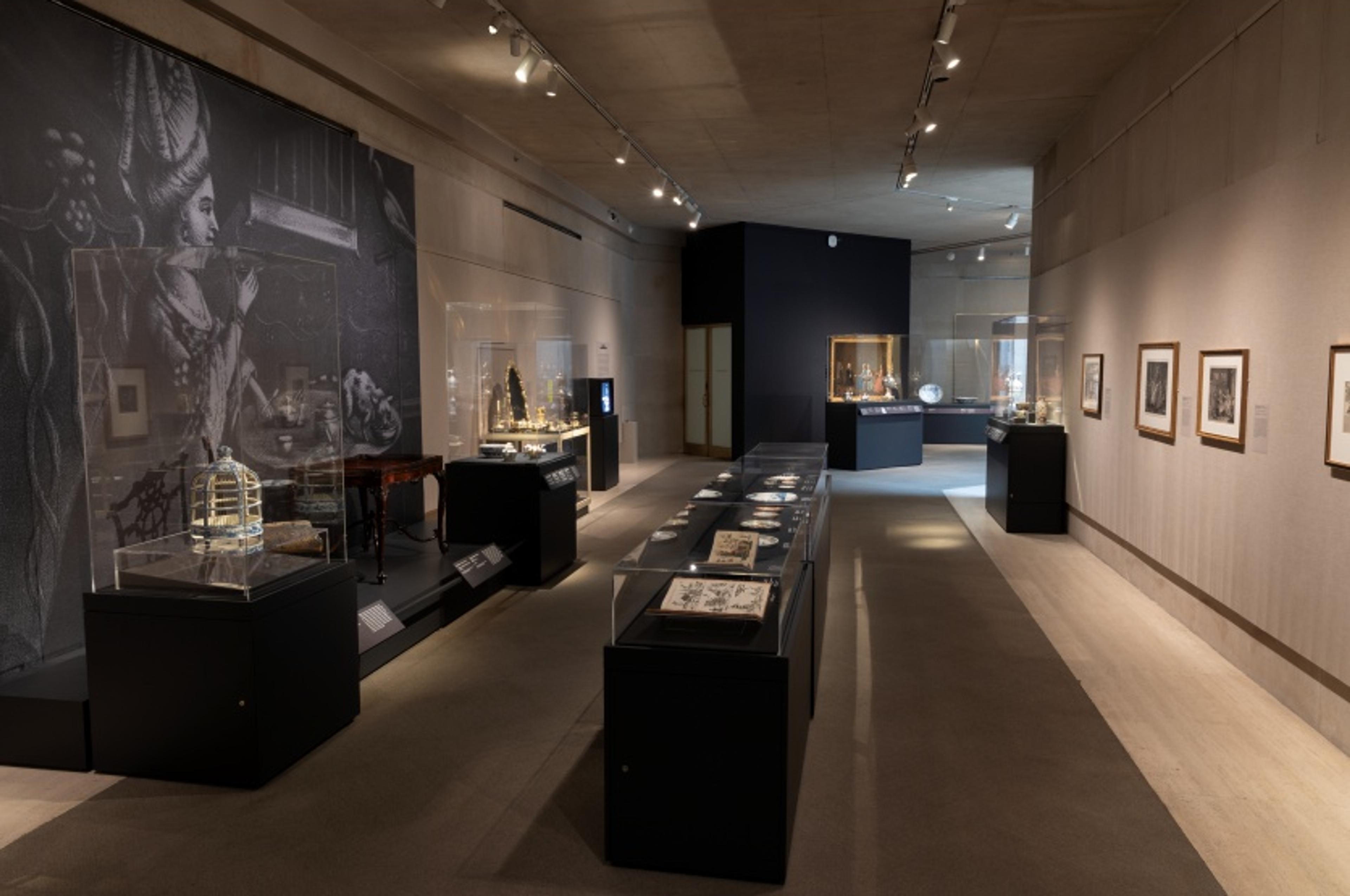
In 1662 Catherine of Braganza disembarked in England from Portugal, asked for a cup of tea, and was met with puzzled looks. The people greeting the king’s new bride had never heard of the exotic hot beverage from China. The newly fashionable drink, at first only for the wealthy, became ingrained in European culture by the eighteenth century. England domesticated it as a national beverage, a symbol of civility that set it apart from the “savage” territories it exploited and colonized. The racialized bodies of Black Africans and Chinese people often used as decorative motifs on European tea vessels are lasting reminders of the human costs of luxury.
Porcelain signaled politeness at home. The table was its domain. There, women performed dutiful roles of hostess, mother, wife, daughter, or servant, artfully arranging tea wares featuring ornate evocations of a faraway China. Yet home could also function as a cage. Public debates aired collective fears around women’s growing voices as consumers, tastemakers, and citizens. Fragile, breakable porcelain gained negative associations with unbridled female sexuality. Even women’s genteel gossip over tea was criticized as a potent force that could make or break reputations. Spilling tea could be dangerous.
Selected Artworks
Press the down key to skip to the last item.
Artificial Mothers: Porcelain Figurines and Womanhood
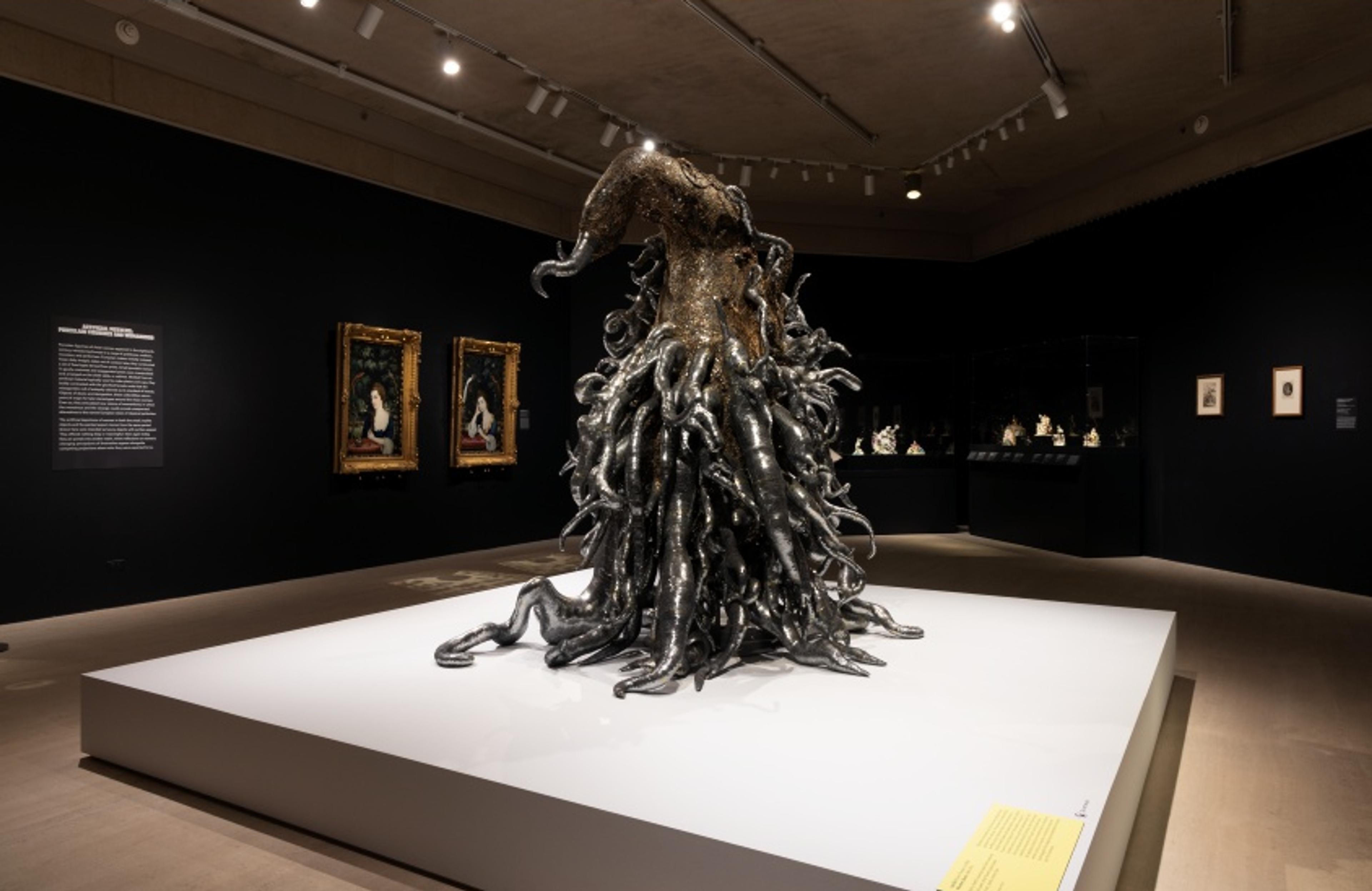
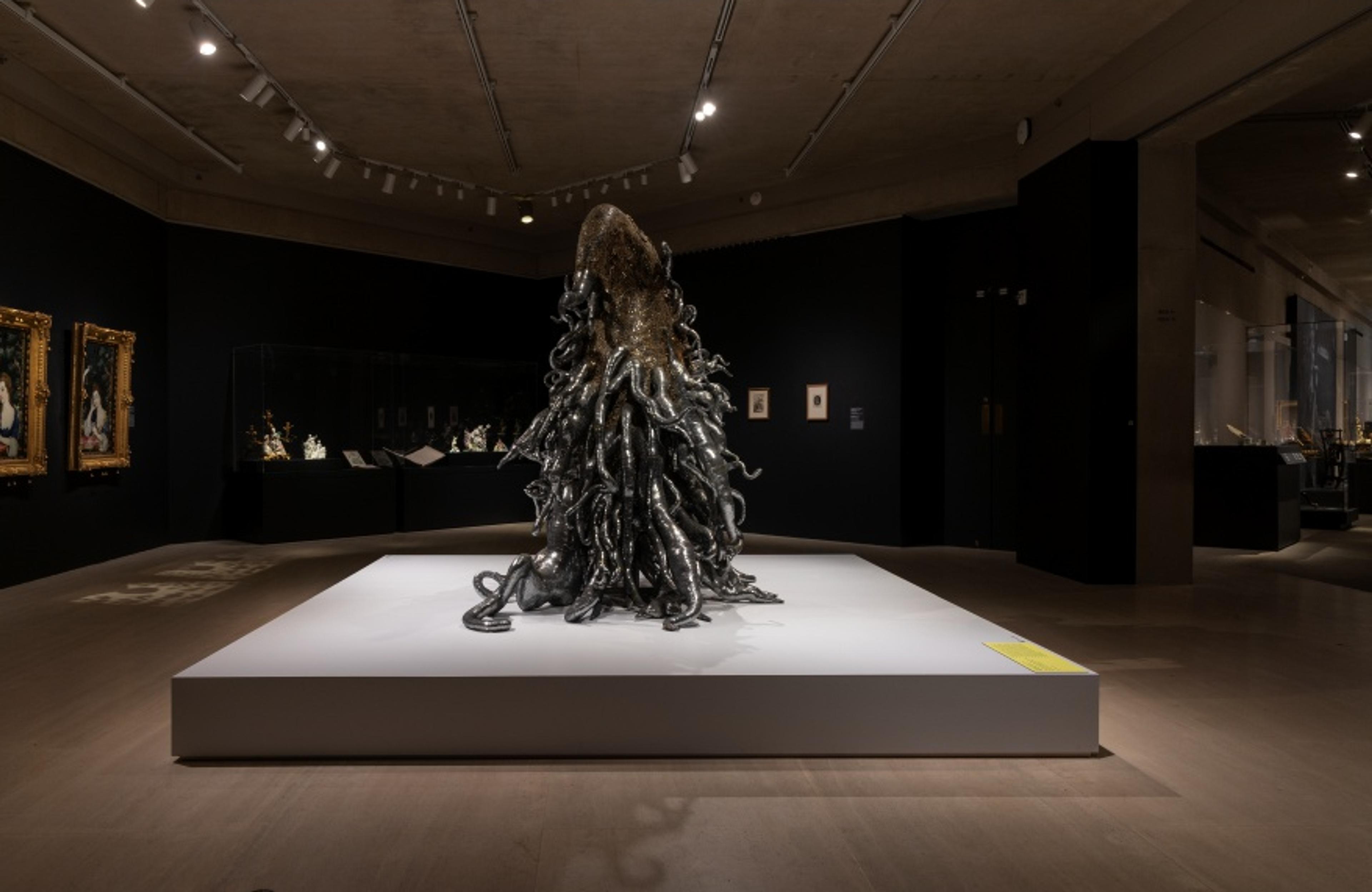
Porcelain figurines of Asian women appeared in the eighteenth century, introducing Europe to a range of goddesses, mothers, monsters, and performers. European makers initially imitated Asian deity images, taken out of context; later, they constructed a set of fixed types derived from prints. Small porcelain women in gaudy costumes and exaggerated poses were manipulated and arranged on the shelf, table, or cabinet. Molded from an artificial material typically used to make plates and cups, they boldly contrasted with the glorified female nude that the misogynistic cult of antiquity claimed as its standard of beauty. Objects of desire and denigration, these collectibles were a point of origin for later stereotypes around the Asian woman. Even so, they articulated new visions of womanhood, in which the monstrous and the strange could provide unexpected alternatives to the narrow European vision of classical perfection.
The artificial depictions of women in both the small, toylike objects and the painted export mirrors from the same period shown here were intended as luxury objects with surface appeal. They offered nothing deep or meaningful. Seen again today, they are portals into another realm, where reflections on women’s changing perceptions of themselves appear alongside competing projections about who they were expected to be.
Selected Artworks
Press the down key to skip to the last item.
Afterlives of Chinoiserie
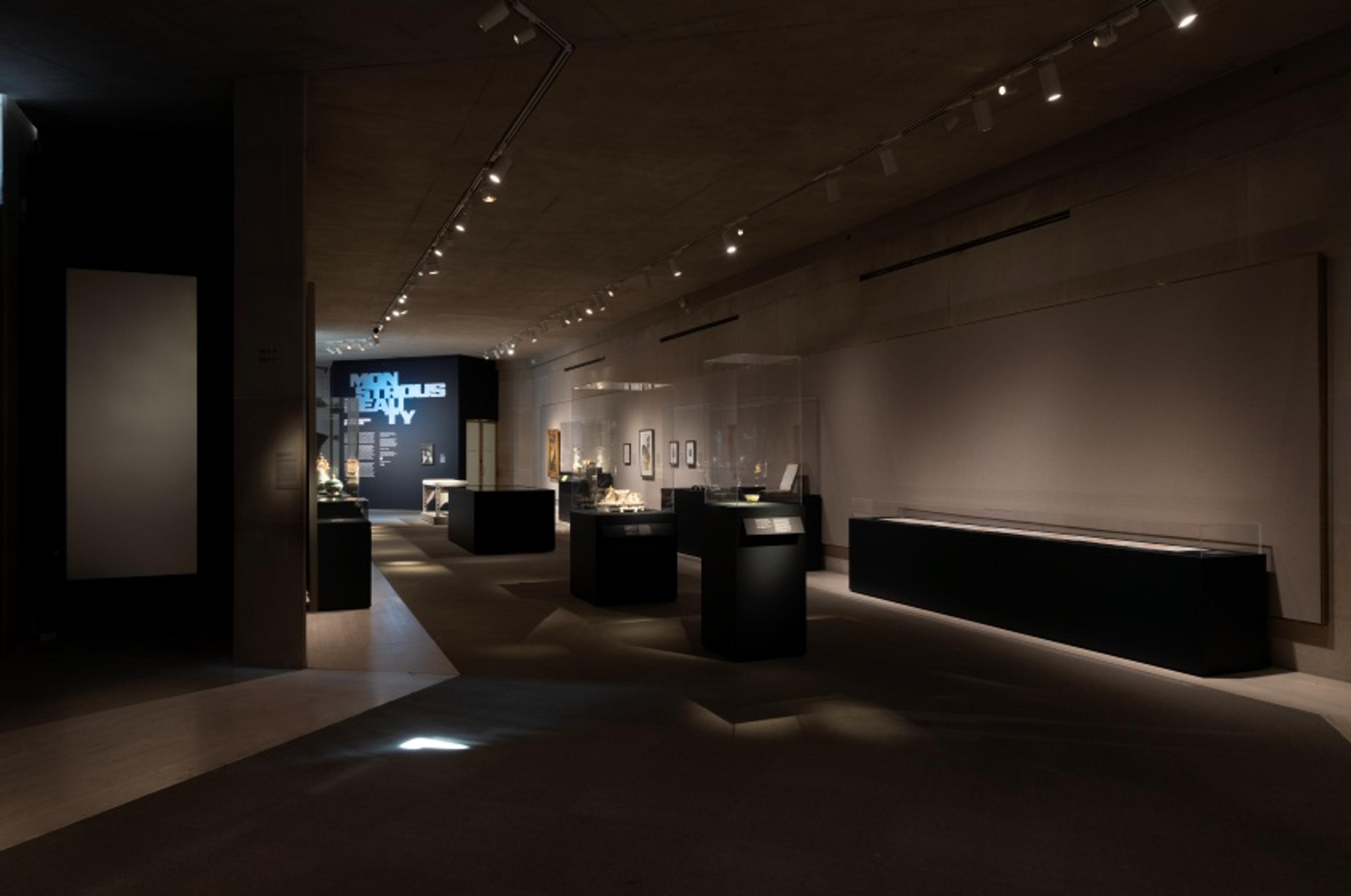
America shaped the “afterlives” of Chinoiserie through film and photography. Like porcelain, these media provided a glossy substrate upon which fantasy images of the Asian woman could be projected. Early nineteenth-century Americans saw porcelain as a tool for expressing the new nation’s ambitions. The coats of arms of noble European families were replaced by patriotic eagles. Enterprising families amassed wealth through trade with China, as direct maritime routes brought access to luxury goods. American merchants’ growing involvement in the illicit opium trade brought a sinister aspect to the language of Chinoiserie. It acquired associations with the hidden, the shady, and the dangerous: the same descriptions were applied to Chinese laborers the nation had initially welcomed but then sought to expel with the first racist immigration laws.
Once a novelty, Chinoiserie had acquired the fog of nostalgia by the time the Qing ruler Empress Dowager Cixi (1835–1908) and the actor Anna May Wong (1905–1961) appeared. Though divided by culture, class, and circumstance, both women used mass media for reinvention. Each had to contend with being seen through a distorting lens that refused to accord them agency as modern individuals. Asian womanhood was reduced to a gaudy source of moral corruption. Contentious figures in their lifetimes, they signal the powers and perils of fame.
Selected Artworks
Press the down key to skip to the last item.
Atrium
Yeesookyung (Korean, b. 1963)
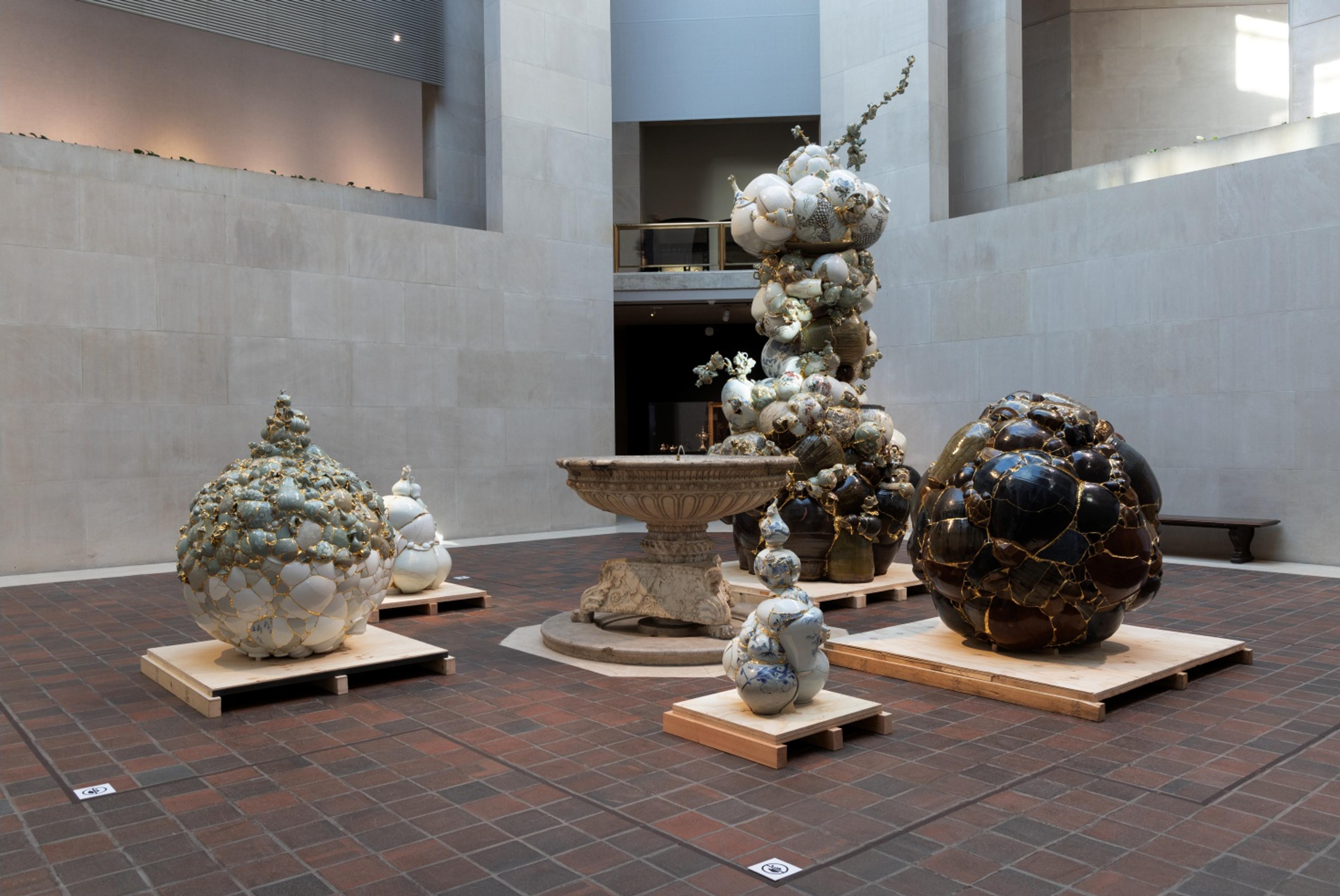
Broken bowls and cups rarely invite a second glance. In Korean artist Yeesookyung’s work, ceramic shards are given new life, transformed into monstrous and imposing forms that resemble creatures from another planet. Growing up in Korea, Yee often heard her mother refer to damaged vessels like chipped rice bowls as negative signs, akin to a woman’s loss of dignity once “broken like a porcelain dish.” Yee contends with these cultural ties between porcelain and women’s bodies by turning discarded remains into art. A technique of mending and repair is used to highlight rather than mask imperfections, sutures, and scars, the evidence of a life fully lived.
Selected Artworks
Press the down key to skip to the last item.
